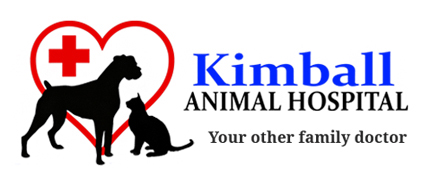Library
-
Acute respiratory distress syndrome (ARDS), also known as shock lung, is a life-threatening complication of critical illness in dogs, such as systemic infection, systemic disease, severe trauma, or near-drowning. Treatment involves targeting the underlying cause while supporting the dog's compromised lung.
-
Addison’s disease is caused by the decreased release of the hormones cortisol and aldosterone from the adrenal cortex. Most commonly caused by immune-mediated destruction, Addison’s disease can also be caused by trauma, infection, neoplasia or hyperadrenocorticism treatment. Clinical signs are non-specific and often come and go. The most definitive diagnostic test for Addison’s disease is the ACTH stimulation test.
-
Addison’s disease, also known as hypoadrenocorticism, is a condition in which the adrenal glands do not produce enough glucocorticoids (steroids) and is considered rare in cats. When normal adrenal gland tissue is destroyed, cats often have a history of waxing and waning periods of lethargy, decreased appetite, and weight loss.
-
An allergy occurs when the cat's immune system overreacts or is hypersensitive to foreign substances called allergens. There are four main types of allergies in cats, namely flea allergy, atopic dermatitis (atopy), food allergy, and contact allergy. They share common physical expressions and signs in cats, and each has unique features.
-
Amyloidosis occurs when amyloid proteins are deposited outside cells in various tissues and organs causing tissue and organ dysfunction. It is uncommon in cats, except for Abyssinians, Siamese, Burmese, Tonkinese, Devon Rex, and Oriental shorthair breeds. Signs depend on the organs involved, but kidney involvement is most common. If kidneys are involved, signs include mouth ulcers, weight loss, vomiting, and dehydration. For cats with liver involvement, signs include weakness, pale gum color, distended abdomen, rapid heart rate, rapid breathing, abdominal pain, and collapse.
-
Amyloidosis occurs when amyloid proteins are deposited outside cells in various tissues and organs, causing tissue and organ dysfunction. It is uncommon in dogs, except in beagles, Chinese Shar-Peis, collies, treeing walker hounds, and English foxhounds. Signs depend on the organs involved, but kidney involvement is most common. If kidneys are involved, signs include mouth ulcers, weight loss, vomiting, and dehydration. For dogs with liver involvement, signs include weakness, pale gum color, distended abdomen, rapid heart rate, rapid breathing, abdominal pain, and collapse.
-
The anal sacs are two small pouches located on either side of the anus at approximately the four o'clock and eight o'clock positions. The walls of the sac produce a foul smelling fluid which is released whenever the cat passes a bowel movement. The anal sacs or their ducts can become inflamed or infected due to a variety of causes. Most cats will respond well to pain relief medications and antibiotics (for several days until the swelling and inflammation have subsided. If a cat has several episodes of anal sac disease, and diet or supplements do not relieve the problem, the anal sacs can be removed surgically.
-
The anal sacs are two small pouches located on either side of the anus at approximately the four o'clock and eight o'clock positions. The walls of the sac produce a foul smelling fluid which is released whenever the dog passes a bowel movement. Bacteria that are normally present in the feces can readily travel up the ducts and enter the sacs resulting in infection. The first sign is often scooting or dragging the rear along the ground. Treatment for impaction involves expressing or emptying the sacs. Antibiotics are often prescribed. Most dogs will require pain relief medications for several days until the swelling and inflammation have subsided. In recurrent or severe cases, surgical removal of the sacs may be necessary.
-
Anaphylaxis is an acute severe allergic reaction caused by an overreaction of the body's immune system to an allergen such as a food protein, medication, vaccine antigen, or other chemical. The most common signs include itching, cutaneous edema, hives, excessive drool, vomiting, diarrhea or respiratory distress. Diagnosis is made based on history and physical exam.
-
Anemia is a medical term that refers to a reduced number of circulating red blood cells, hemoglobin, or both. It is not a specific disease, but rather the result of some other disease process or condition. The most easily observed and common clinical sign of anemia is a loss of the normal pink color of the gums. Several tests are performed on blood samples to diagnose anemia. If your cat's anemia is so severe that it is life threatening, a blood transfusion will be needed.

